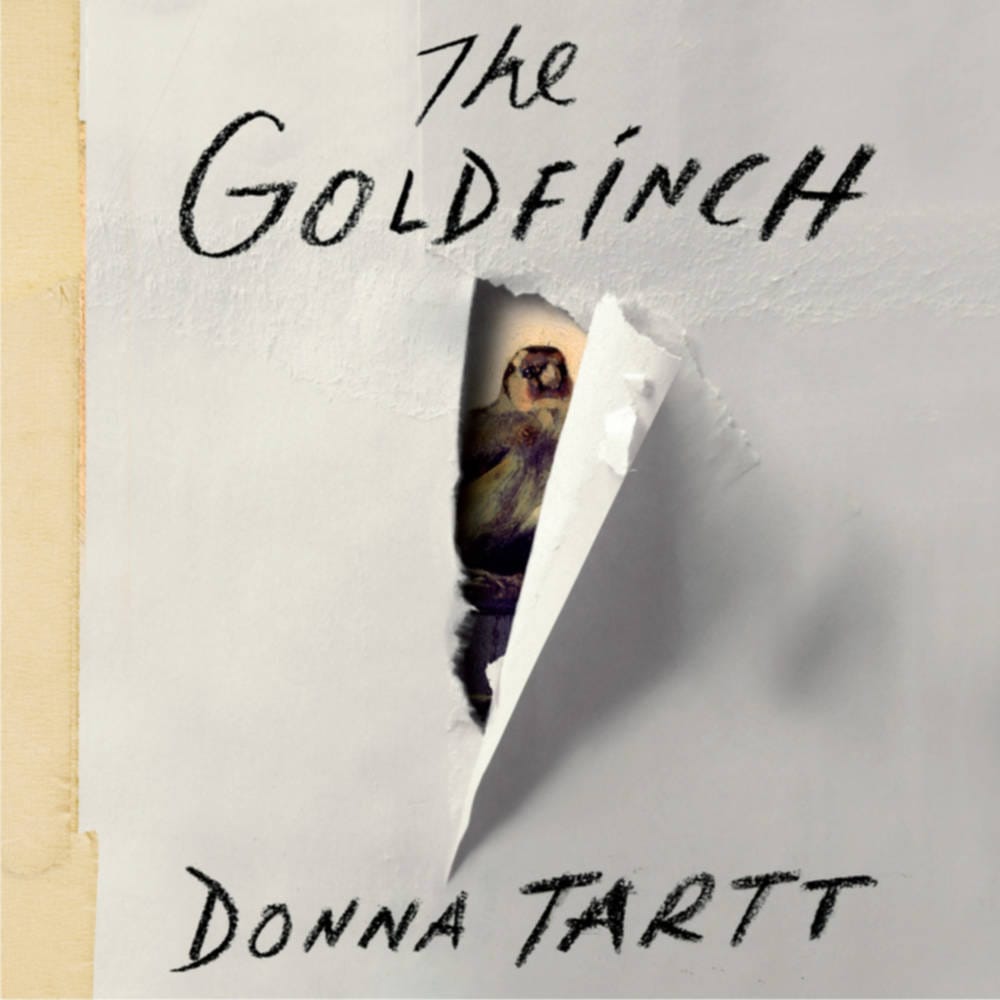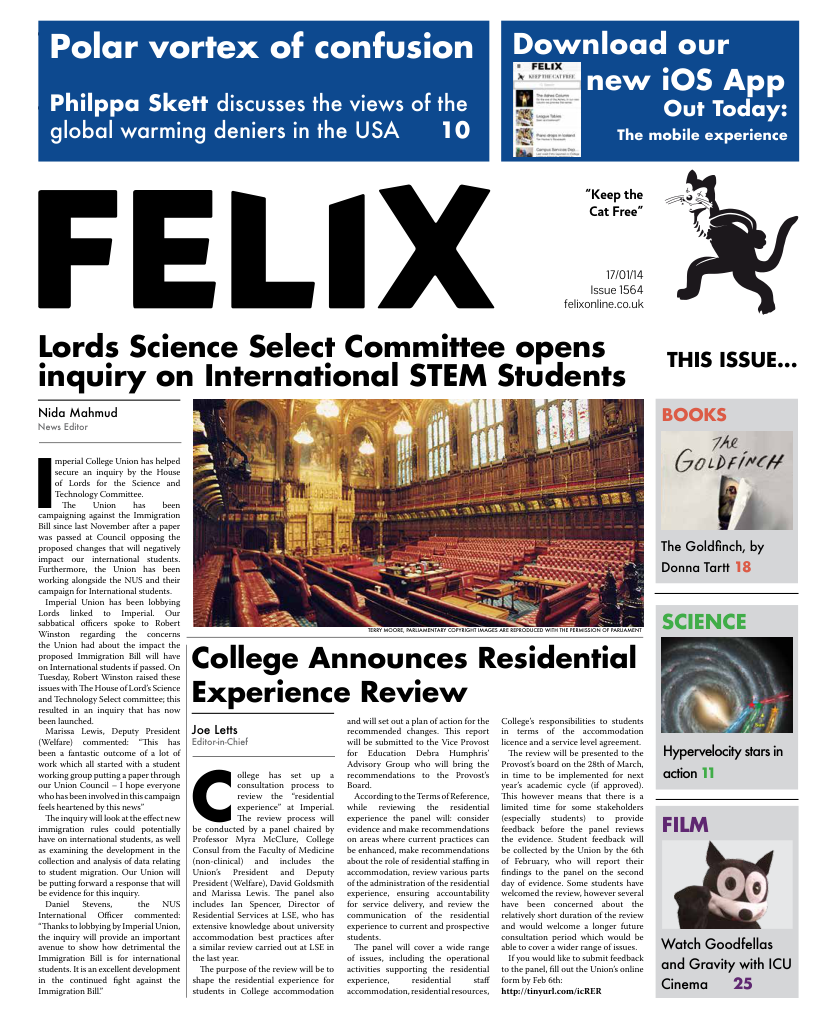A story of loss and beauty
Vithulan Patkunan reviews Donna Tartt’s latest masterpiece

Anyone familiar with Donna Tartt knows that her works take time; her debut, The Secret History, took her eight years to complete and her following novel, The Little Friend, a decade. Anyone familiar with Donna Tartt also knows that the wait is completely justified and worth it. The Goldfinch, her third and latest novel is no different from its predecessors, in both senses. Fans have been waiting for her next novel for eleven years and it was finally unleashed on the world in the autumn of 2013. At a hefty 771 pages, the book is her longest yet and the world she creates is, no doubt, the richest.
The Goldfinch is a tale about a man’s life from teenager to adult, and how it completely metamorphosed after a single piercing event: the loss of his mother. After baiting us with a literary ‘cold-open’ – the protagonist, Theodore Decker, is cooped up in a hotel room in Amsterdam, waiting to discover if his name and implied crimes, whatever they may be, have been outed in local news reports – the narrative goes back in time to tell the story from the beginning.
It all starts on a particularly rainy day in New York City where Theo and his mother are on their way to a parent teacher meeting, set up for the thirteen year old on account of him being suspended. Met with some free time before the meeting, Theo’s mother, a lover of art – and of a specific piece being exhibited that day in particular, decides to visit the museum, unaware of the terrorist bombing set to destroy the building. Having been separated from his mother inside, Theo finds himself amongst rubble and bodies. Here he experiences the single most important encounter of his life. An old man, badly injured, communicates with him: incoherent but with moments of extreme clarity. He gives him a ring and the words “Hobart and Blackwell”. He also urges him to salvage Fabritius’ masterpiece, The Goldfinch, which happened to be the very painting that Theo and his mother had come to see.
Theo leaves the bombsite back to the agreed emergency meeting point: their apartment. He has with him nothing but the painting, the ring and an assured feeling that his worried mother would be waiting for him back home wondering what took him so long. The writing of the following events shows off Tartt’s genius beautifully, contrasted with the tragic circumstances they describe. The emptiness of the apartment, the nausea of the concussed Theo falling in and out of consciousness and perhaps worst of all, his unfailing belief that his mother would walk in any moment now are conveyed painfully to the reader; the broken sentences interspersed with long meandering ones place us amidst the confusion, chaos and concussion of it all. Perhaps the most disturbing aspect of the situation is the indifference and abruptness with which a couple of social workers let the thirteen-year-old Theo Decker, along with the readers, know that his mother was dead: one of the most fascinating passages in fiction that isn’t outstanding due to the events that occur, but to the intensity and accuracy with which the emotions are expressed.
It wouldn’t be an exaggeration to say the rest of the book details how Theo copes with the news. As his alcoholic father had left him and his mother a long time before, he was suddenly alone and shipped from place to place; we see the life of a private school kid in New York get turned completely upside down, to a life where child and drug abuse are commonplace, to a place where nobody cared if he came home for the night or not. One of the first things you’ll notice about this book is its wide array of characters, each with their own quirky, carefully revealed personalities. Having said that, there are really only two main characters in The Goldfinch: Theo and his mother. Despite the fact that his mother is alive for only a tiny proportion of the book, the echo of her life exists through the pages, through Theo. His actions, his thoughts, the people he likes and dislikes, can all be traced back to his mother and to his deep sadness at her loss. We learn, with regular drips of information, of her past, her tendencies and her small quirks. The way Tartt keeps the character connected to his past is startling in its realism. We see Theo go through massively contrasting situations, harrowing lows and ecstatic highs; each event molds his personality and we see the results in his future decisions.
It is difficult to write about the plot of this book without spoiling it somewhat. After the opening chapters set in New York and Theo’s mother’s death – which form the premise of the story – the plot goes at high speed from one place to the next. Half of the fun in reading this book is the anticipation of the plot and where it would lead next with its many twists.
There are a few major themes running through this book, one of which is the theme of antiques. Theo becomes fascinated with _The Goldfinch _painting he takes from the destroyed art gallery and then with furniture and antiques in general. Perhaps after witnessing the transience of human life, he takes solace in the longevity and assuredness of ancient pieces of art. James Hobart of “Hobart and Blackwell”, which we find out to be an antiques store, is to whom Theo is led after heeding the injured old man’s words. Affectionately called ‘Hobie’, the giant of a man becomes Theo’s guardian and his teacher in all things antique. Theo’s relationship with Hobie is one of the few real connections we see him have; his exchanges and presence give Theo (and the readers) an anchoring in the otherwise choppy waters of his life.
Perhaps one of the most intriguing characters in the book is that of Boris: a misfit Russian kid Theo befriends at school after his mother’s death. An alcoholic from age ten, Boris sets Theo off into a routine of alcohol, cigarettes, glue-sniffing and shoplifting. Boris’ casual criminal behavior, suffering of abuse at his father’s hand and exposure to an adult’s world at too early an age makes him a tragic yet interesting character, not least due to his genuine caring for Theo. The inevitable dependency on drugs that Theo develops becomes a source of some of the more depressing but beautiful passages in the book. Theo’s musings and frustrations at the “human predicament” during his drug fuelled highs and withdrawal depressions create an emotional depth, while the unfolding of the story brings a sense of fast-paced action, all leading up to the events of the ‘cold open’ in Amsterdam and the intense ending.
Donna Tartt has always had an ability to express hauntingly familiar yet seemingly inexplicable emotions in an exact and precise way, an ability to explain abstract concepts in a tangible fashion. This novel is no different, in fact it seems Tartt has honed this skill even further to the point where she has created moments where you truly and strongly relate to Theo.
A passage from the book where an art connoisseur describes The Goldfinch, the painting, comes to mind when describing the novel itself. “There’s a doubleness. You see the mark, you see the paint for the paint, and also the living bird…Rembrandt. Velázquez. Late Titian. They make jokes. They amuse themselves. They build up the illusion, the trick – but, step closer? it falls apart into brushstrokes…A different and much deeper sort of beauty altogether.” The novel as a whole is her masterpiece, her brushstrokes are her abilities to make words malleable and form them to articulate exactly what she wants: a deeper sort of beauty altogether. Anybody who loves reading should read this book, whether you like the characters or not, you will love the experience. All that can be said about The Goldfinch: 11 years well spent. And well spent is exactly what the time invested in reading this mammoth book would be.





